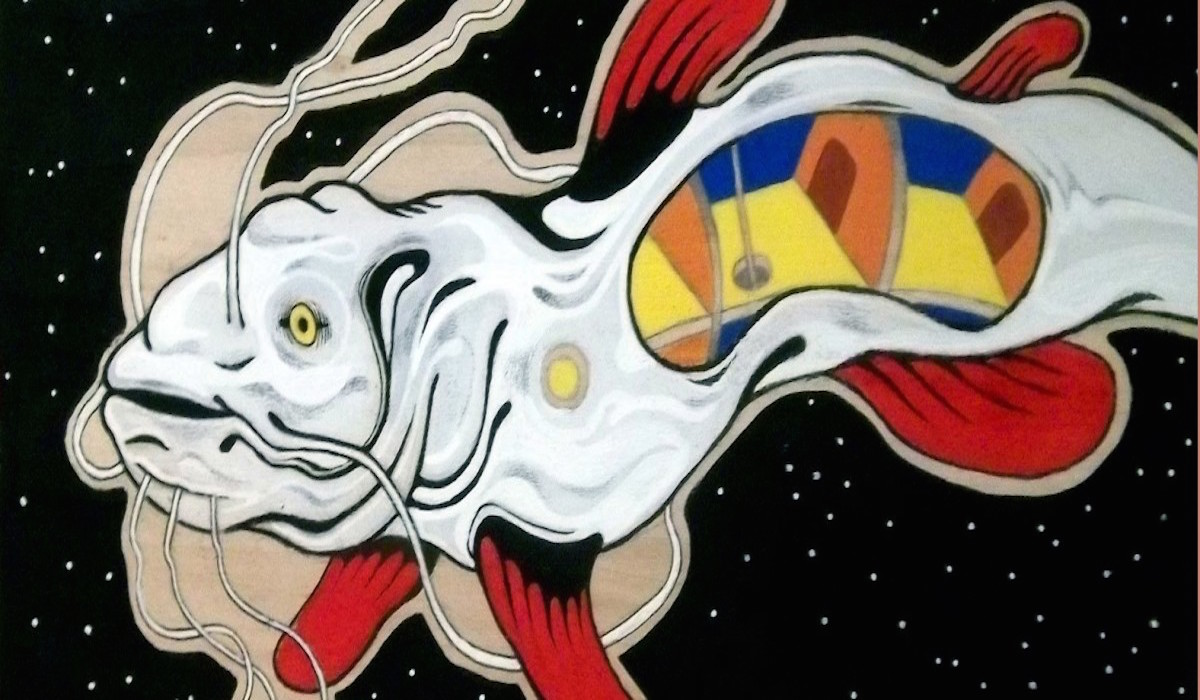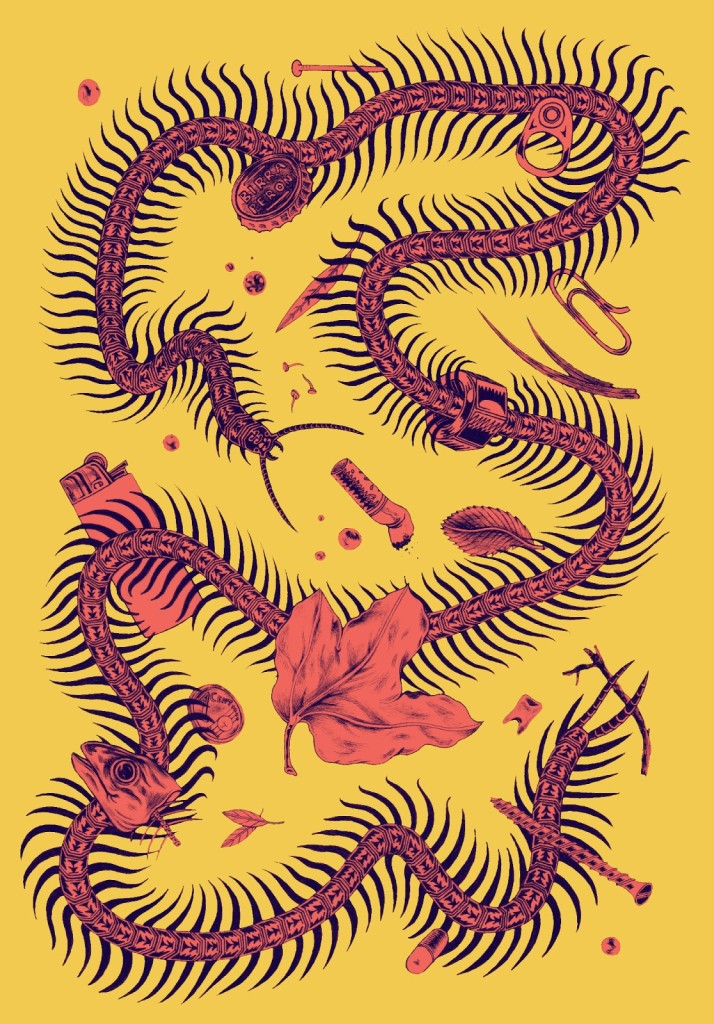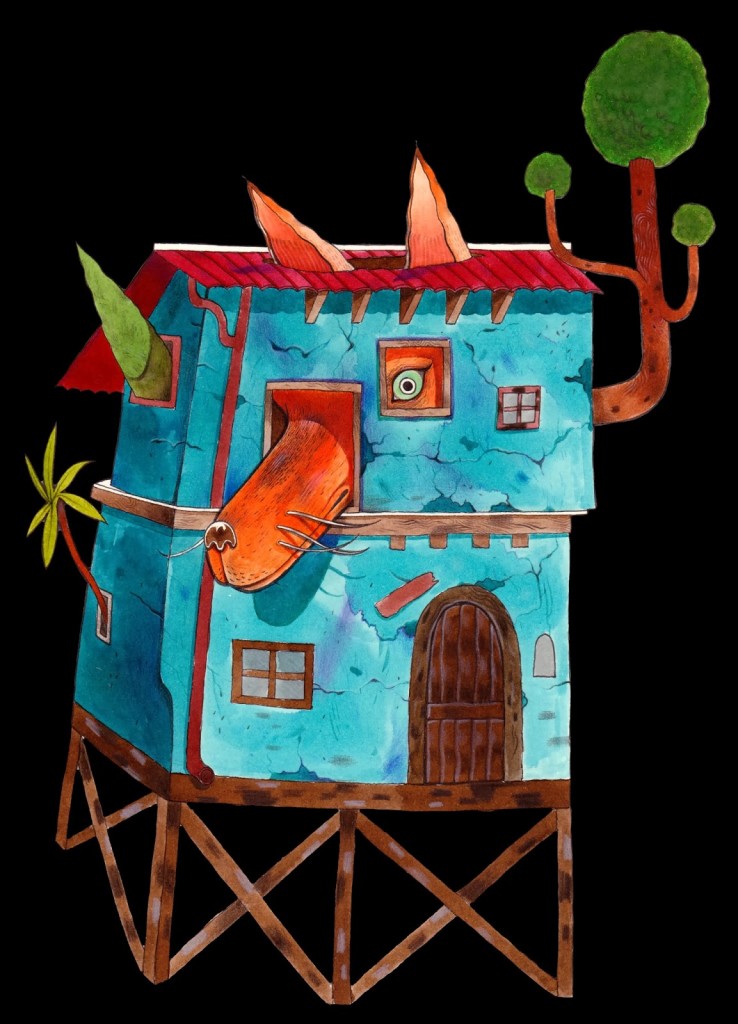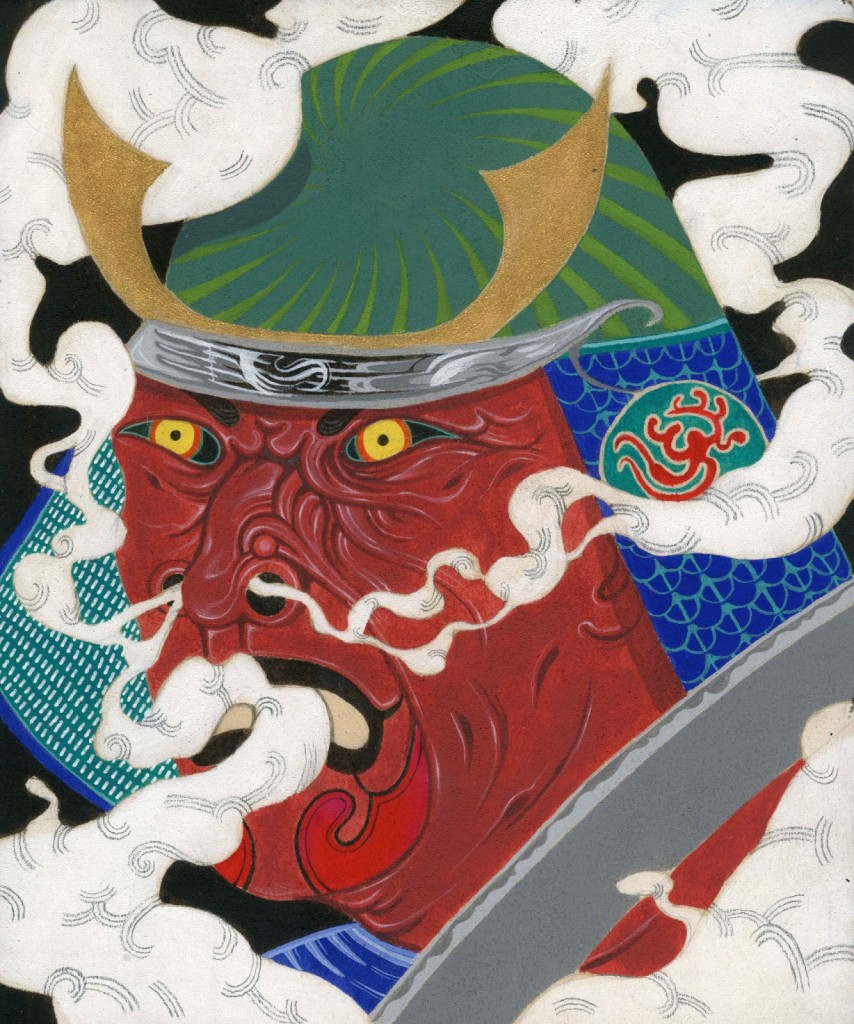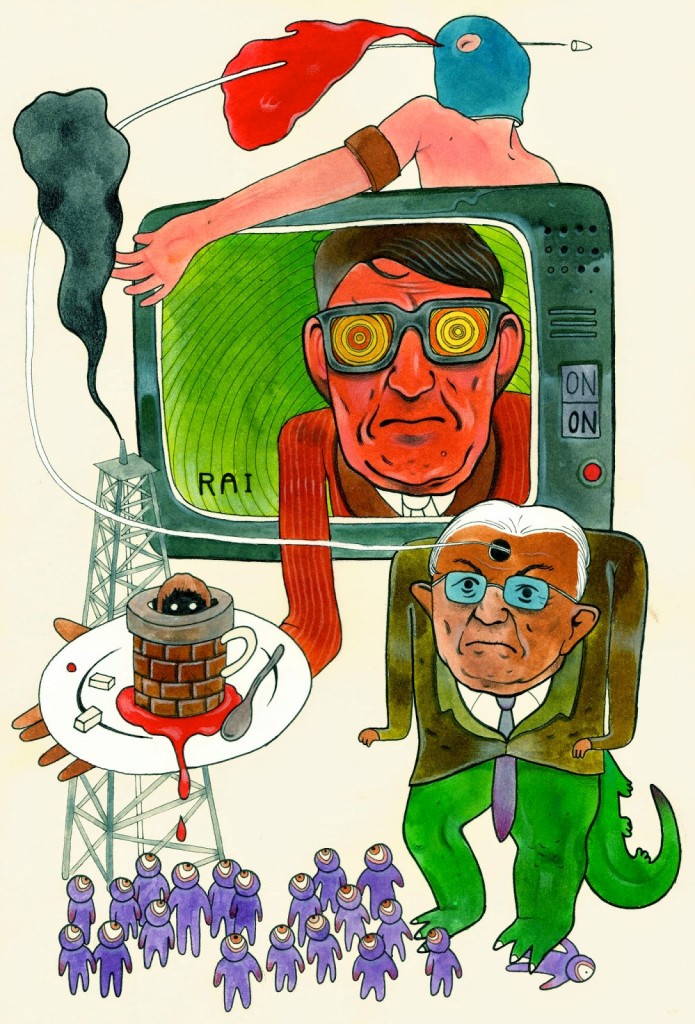Forse il mondo del disegno, delle illustrazioni, dei fumetti qui in Italia è conosciuto solo da pochi. Tuttavia, pian piano sta uscendo dalla sua nicchia e, spingendo, si sta facendo prepotentemente strada nella nostra cultura. Per fortuna ci sono giovani artisti, come Manfredi Ciminale che, sgomitando quanto basta, aggregandosi ad altri “simili”, stanno riuscendo a far conoscere l’arte dell’illustrazione.
Noi di The Walkman abbiamo voluto dare spazio ai suoi disegni, al suo modo di guardare il mondo sotto un microscopio, alla ricerca del bello e del diverso, tra animali, colori, fumetti e festival!
Come si avvicina un ragazzo giovane, che magari sta ancora decidendo cosa fare della propria vita, al mondo del disegno?
Innanzitutto disegnando. Sempre, in continuazione. Poi guardando, imparando cosa fanno gli altri e come lo fanno. A questo punto puoi tornare a disegnare con la consapevolezza che il confronto con il mondo esterno e con il lavoro altrui è fondamentale, a volte duro, ma fondamentale.
Quando hai iniziato come pensavi si sarebbe evoluta la tua carriera e come, di fatto, ti stai facendo strada in questo mondo?
Dai classici “disegnetti” sui banchi al liceo sono passato a minuscole facce su fogli intonsi che rimiravo per ore come fossi stato Caravaggio (adesso rimiro per mezz’ore essendo consapevole di non avere nulla a che fare con Caravaggio). Il passaggio successivo è stato disegnare professori di psicologia in decomposizione, per poi finalmente approdare a una scuola di illustrazione. Finita anche questa ho preso uno studio con i miei amici Circasette, da allora cerco di sbarcare il lunario, lavorando ai progetti che mi interessano e portando avanti la mia ricerca personale.
Credi che in Italia un giovane illustratore abbia le possibilità necessarie per emergere? Qual è il panorama che hai davanti?
In Italia, checché se ne dica c’è un fervido sottosuolo culturale legato all’illustrazione il quale tuttavia trova spesso difficoltà a conciliarsi con un vero e proprio guadagno. Purtroppo la logica perversa a cui siamo abituati è il lavoro gratuito, e siamo al tempo stesso vittime e carnefici di noi stessi. Io penso che le possibilità per fare bene questo lavoro ci siano… Sotto sotto.
Dando un’occhiata alla tua pagina Blogspot non abbiamo potuto fare a meno di notare nei tuoi disegni la presenza costante di animali: un gran numero di lucertoloni, qualche pennuto, rosso, ocra accostati a colori più freddi. Cosa vuoi raccontare?
Ci tengo a rappresentare concetti o sentimenti che vanno oltre il segno o la tecnica. Gli animali mi stupiscono, hanno spesso per me valori simbolici, li disegno in continuazione. Un’altra cosa che fin da piccolo mi fa impazzire è il micromondo del prato: immaginare che cosa vede un insetto o come è fatto dentro. Ultimamente ho comprato un microscopio portatile. Mi sono reso conto che devo usarlo con parsimonia perché altrimenti mi astraggo totalmente dal mondo esterno per “incartarmi” su come è fatto il tessuto della sciarpa della signora che passa o su un’enorme voragine che in realtà è solo il punto nero sul naso del benzinaio. Mi piace raccontare questo: le mille sfaccettature della realtà che abbiamo davanti al naso tutti i giorni, i mondi nascosti che l’occhio non vede ma che esistono.
Quali sono gli artisti, che siano illustratori oppure no, che hanno influenzato maggiormente il tuo modo di disegnare?
Non posso non mettere tra gli dei dell’Olimpo Pazienza e Toppi, ma una cosa che potrà sembrare scema è che mi sono avvicinato e appassionato inconsapevolmente alle illustrazioni grazie a quel fantastico libro di non so chi: dov’è Wally, miliardi di particolari, talmente tanti che alla fine di trovare Wally non mi interessava più. Ora però mi soffermo su illustratori più moderni che spesso mi influenzano molto.
Da qualche mese è nato Parade, come collaborazione tra trenta artisti diversi che si sono cimentati nel raccontare, tramite immagini, le passioni che ognuno di noi vorrebbe tenere segrete: parafilia, amori bizzarri, fenomeni sessuali. Parlaci un po’ di questa esperienza!
Il progetto è nato nella buia caverna che è lo studio di Circasette (il mio gruppo di colleghi illustratori) tra un lavoro individuale e l’altro collaboriamo a progetti comuni. In questo caso volevamo raccontare le particolari forme che prendono le passioni dell’uomo provando ad astenerci dal giudizio, anche di fronte ai fenomeni più bizzarri. Quindi abbiamo scelto una collezione dei 30 migliori illustratori alla nostra portata di mano e li abbiamo contattati! Infine, per dargli un tocco in più, abbiamo avvicinato anche Bizzarro Bazar (un blog interessantissimo che si occupa di stranezze di ogni sorta) e ci siamo fatti scrivere una recensione appassionata. Dopo la stampa, una folta delegazione è partita per presentare Parade al Napoli Comicon di quest’anno, in un ambiente che non ci apparteneva per nulla, pieno di cosplayer di Lamù. Nonostante ciò è andato molto bene. Contiamo molto invece sul festival dei fumetti dirompenti, il Crack, che si tiene ogni anno (quest’anno dal 19 al 22 giugno) nelle celle del Forte Prenestino. In questa pittoresca ambientazione ripresenteremo il nostro fantastico libro magenta forti del successo di Napoli, per poi finire dopo l’estate al Lucca Comics, altro importante coacerbo di libri illustrati, fumetti e fumettisti! Tra l’altro è possibile acquistare Parade anche online sul sito http://paradebook.bigcartel.com/.
Quali progetti hai in cantiere? Dove sarà possibile apprezzare i tuoi lavori?
Sto lavorando al mio primo fumetto breve. Quello del fumetto è un mondo che mi ha sempre affascinato, devo dire però che ho un ritmo di disegno davvero lento (molto meticoloso) e dovrei essere pagato molto per potermelo permettere, ma come direbbe qualcuno: “te piacerebbe”. Dovrebbe uscire nelle migliori e più esclusive librerie del pianeta verso ottobre, in una raccolta con una decina di fumettisti emergenti, ma molto talentuosi. Il progetto si chiama B-comics e il mio fumetto in particolare parla di una melanzana da cui nasce una mantide religiosa.
Cosa potresti consigliare a chi che con fatica e con amore sta tentando di fare della propria passione il suo lavoro, chi ha deciso di investire tempo, denaro e sogni nella creatività?
Purtroppo è una domanda un po’ scomoda e la risposta potrebbe sembrare banale. Per fare questo o qualsiasi altro lavoro creativo bisogna faticare, il doppio degli altri, o lasciar perdere. Siamo stati cresciuti circondati da cuscinetti confortanti grazie ai quali abbiamo imparato che tutto ci è dovuto, ma non è così. A maggior ragione per professioni come la mia!
[divider]ENGLISH VERSION[/divider]
Maybe only few of us in Italy know the design, illustration and comics’ world. But step-by-step it is getting out of his niche and strongly pushing and surfacing our culture. Fortunately there are young artists, like Manfredi Ciminale, who are successfully trying to get people into the art of illustration. The Walkman Magazine wanted to give some space to his work, his way to see the world from a microscope searching for the beauty and the dissimilarity, among animals, colors, comics and festivals!
How do teenagers approach to the design world, if they haven’t already made up their minds for what concerns their lives?
First of all drawing. Always, continuously. Then watching, learning what the others do and how they do it. Then they can come back drawing being sure that the comparison with the world and other people’s work is fundamental, tough, but fundamental.
When you started which way do you think you’re life and career would evolve, and what way they actually did?
I started from the classical “sketches” on the high-school desks, to the tiniest faces drawn on intact piece of paper I would stare at, as if it were a Caravaggio’s work (and now I stare at them, being completely conscious I’m nothing compared to Caravaggio). The following step was drawing psychology teachers decomposing, and then I finally landed to a comic school. By the end of it rented a studio with my Circasette friends and science then I try to make ends meet by working on the projects I’m interested in and carrying on my personal research.
Do you think a young illustrator has the chances to emerge here in Italy? What landscape are you presented with?
Whatever people say, in Italy there’s a fervid cultural subsoil linked to the illustration world, but still it has some trouble with emerging and making a living out of it. Unfortunately, to the perverted logic we are nowadays used to, is working for free, so at the same time we are victims and executioners of ourselves. I think that there could really be the chances to do a good job…. Maybe.
Looking at your Blogspot page I couldn’t help but noticing the persistent presence of animals in your drawings: lots of big lizards, some birds and red and ochre colors put together with colder ones. Is there something you can tell us about?
Representing concepts or feelings going beyond he sing or the technique themselves is something I really care about. Animals amaze me, they often mean something to me, I continuously draw them. And the microcosm of fields is something else I have always been attracted to, since I was a child; thinking of what a bug can see and what’s inside it. Lately I bought a portable microscope and I realized I need to use it carefully, otherwise I tent to isolate myself from the outside and get stuck in thinking of the structure of a lady’s scarf or a huge chasm that is actually a simple pimple on a gas station attendant’s nose. I like telling this, the thousands of sides of reality we are shown with, everyday, hidden existing worlds, even though our eyes do not catch them.
Which are the artists, whether they are illustrators or not, that mostly influenced your way of drawing?
I cannot avoid to mention among the Olympus gods Pazienza and Toppi, but, and it’s something that could sound silly, I narrowed the illustration world unconsciously thanks to that book “Where’s Wally?”, there were so many details that in the end I was no more interested in Wally’s story. But now I’m more interested in modern illustrators.
Parade was born a few months ago, thirty artists working in partnership to tell through images those “passions” everybody would keep secret, such as paraphilia, bizarre loves, sexual phenomena. Tell us something about this experience!
The project was born in the Circasette studio (where I work with my colleagues), where we work on our own project and on some common ones. This time we wanted to tell something about the passion men are overwhelmed with, without judging. So we chose 30 illustrators among the ones we could afford to work with and then we got in touch with Bizzarro Bazar, a blog dealing with every mind of weirdness and we asked them to write a review for us. Then we left for the Naples Comicon to present Parade. We didn’t really fit that context, but we did it anyway! What we are really interested in is the Crack festival (this year it will them place from June 19th to 22nd) at Forte Prenestino. We will present again our amazing book after the success we had in Naples and we will end our promotion with the Lucca comics by the end of summer. It also possible to order our Parade book online at http://paradebook.bigcartel.com/.
What other projects are you working on? Where will we get to appreciate your work?
l’m working in my first short comic, I’ve always loved the comic world, but I have to admit Tustin extremely slow, I pay a lot of attention to details. It should come out in the best bookshops of the universe in October in a collection of the best emerging illustrators’ drawings. The project is called B-comics and my comic is about a praying mantis born from an eggplant.
What would you suggest to those who are trying with dedication to make a non out of their passion, those who decided to spend time, money and energies on creativity?
It is unfortunately an uncomfortable question and my answer may seem banal, anyway, doing this job, working with creativity requires lots of sacrifices, otherwise you let it go. We have been raised taking everything for granted and thinking that everybody owes us something, but that’s not true. Most of all for a job like mine!
Traduzione a cura di Alessandra Fioravanti

